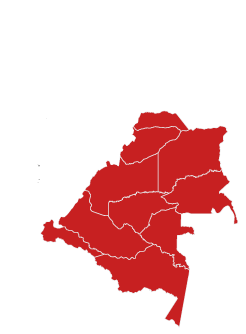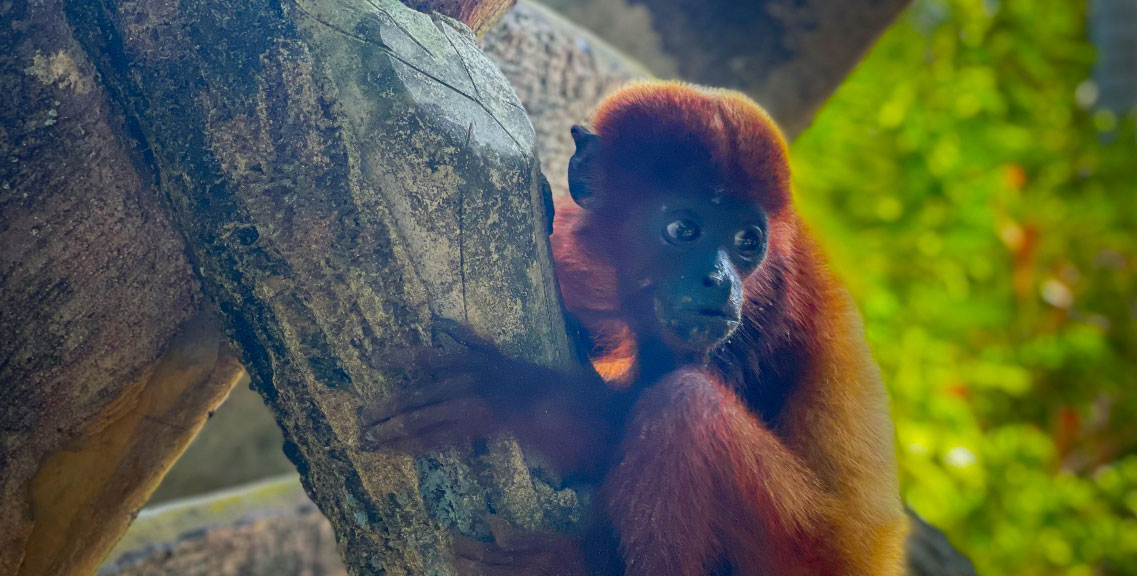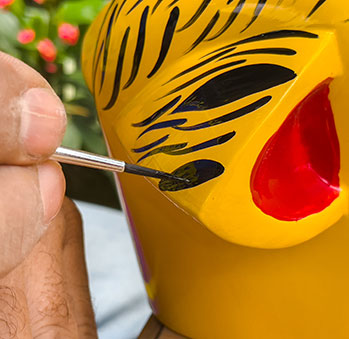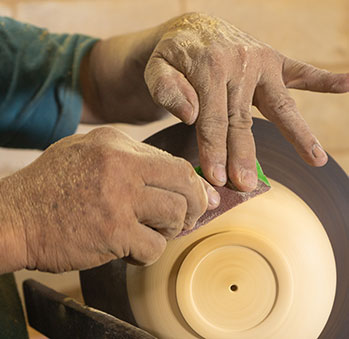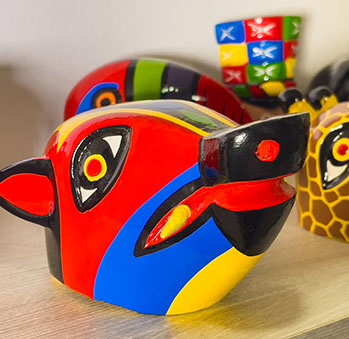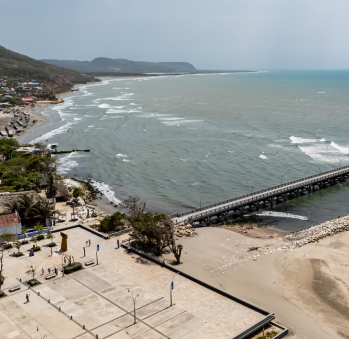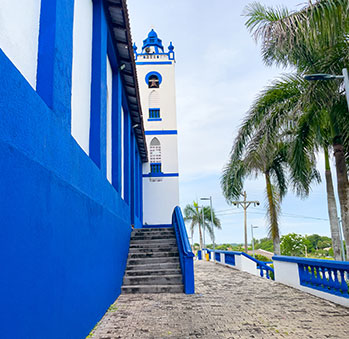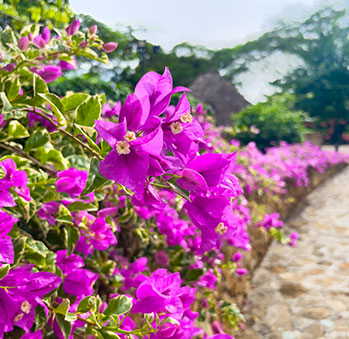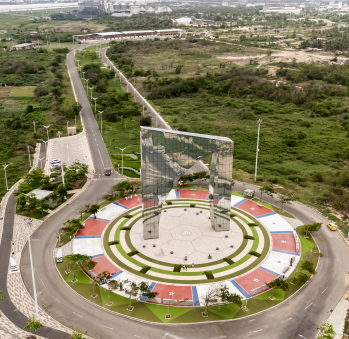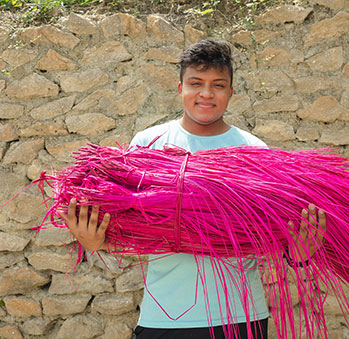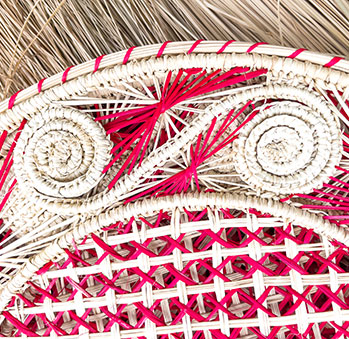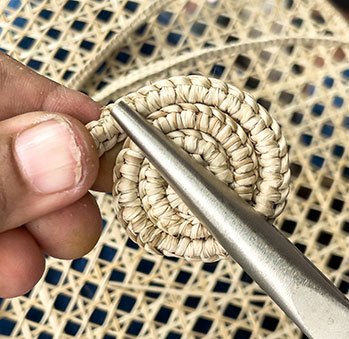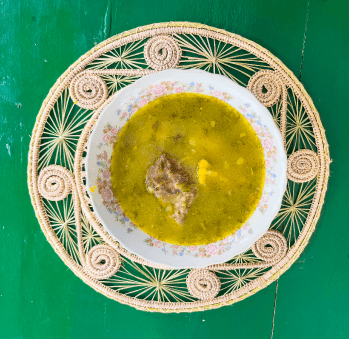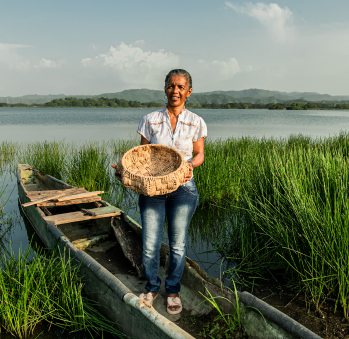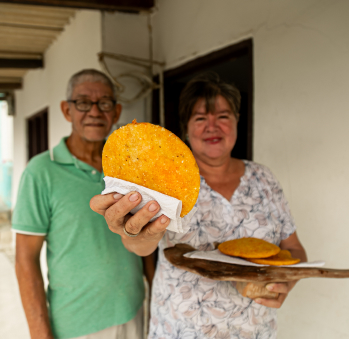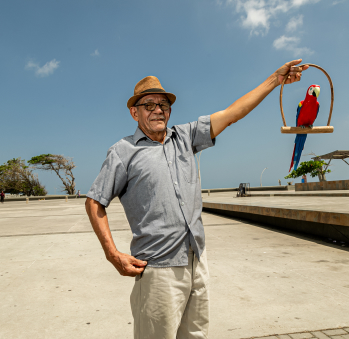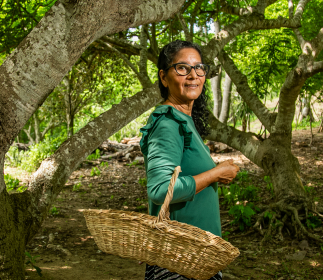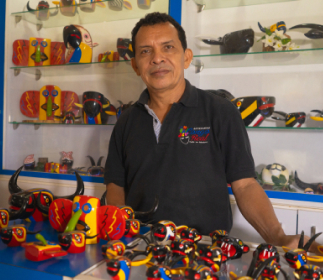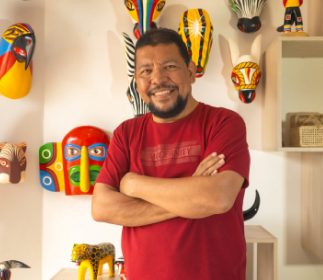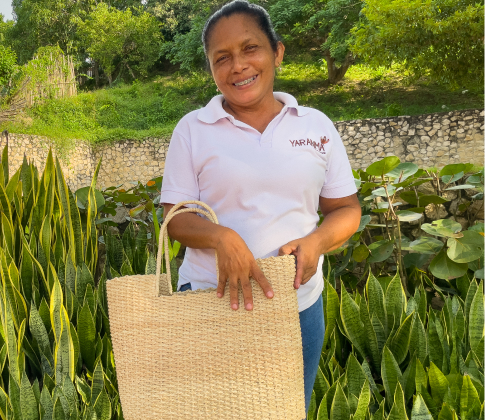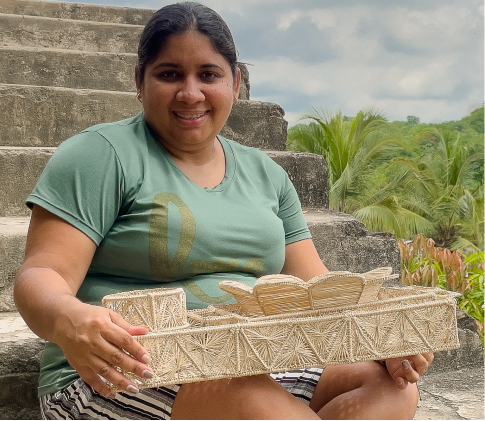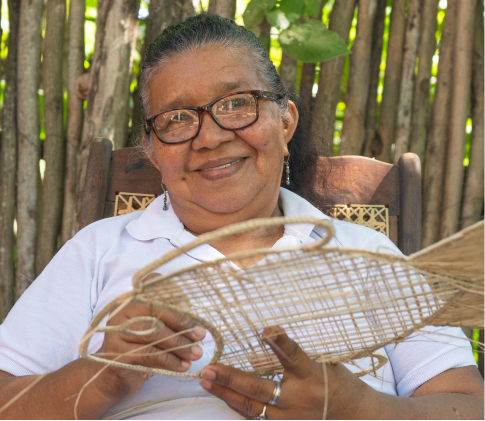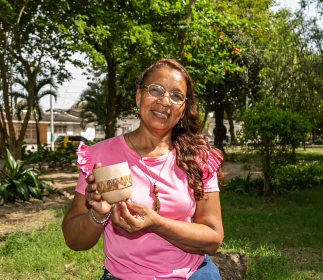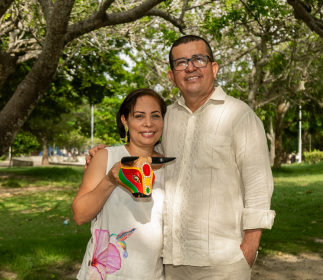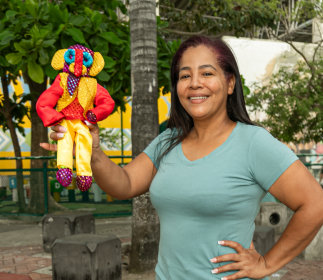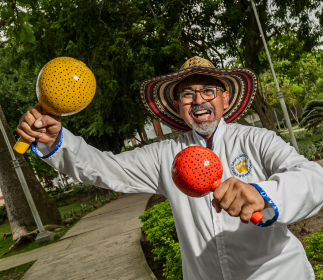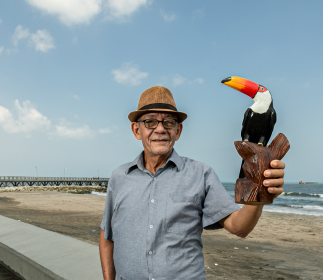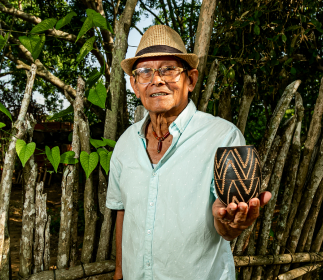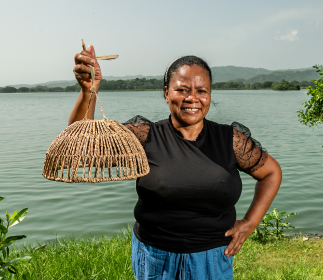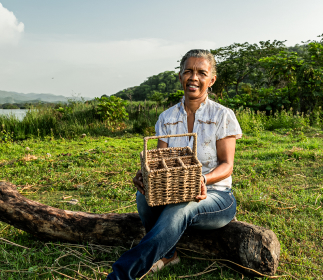Atlantico Route
The Magdalena River, which knows our country so well, as it flows from south to north and is deeply rooted in our history, decided to meet the sea here, in the vibrant land of Atlantico. And as if that weren’t enough, it chose to do so in the very city where, since the early 20th century, the Carnival of Barranquilla takes place, declared an Intangible Cultural Heritage by UNESCO in 2003. That’s why we suggest adding another layer to the richness that makes so many dance: discovering those who breathe life into their iconic wooden and fabric masks, and those who craft the drums at the base of their rhythms. Breathing in the scent of the sea and fresh water from marshes, rivers, and beaches, we brought to life the cumbias, bullerengues, garabatos, congos, mapalés, and dances that fill our department with as much color as its flowers, making us feel even warmer than the sun. Drawing from these same waters, plants have sprung forth and we’ve skillfully turned them into our materials, and passed down the wisdom of their use through generations among our people. Here, you’ll also get to know materials like vine, totumo, iraca, and enea, used in our crafts, alongside driftwood brought by the waters of the Magdalena River from unexpected heights, a gift not to be wasted.
Embark on a journey full of history
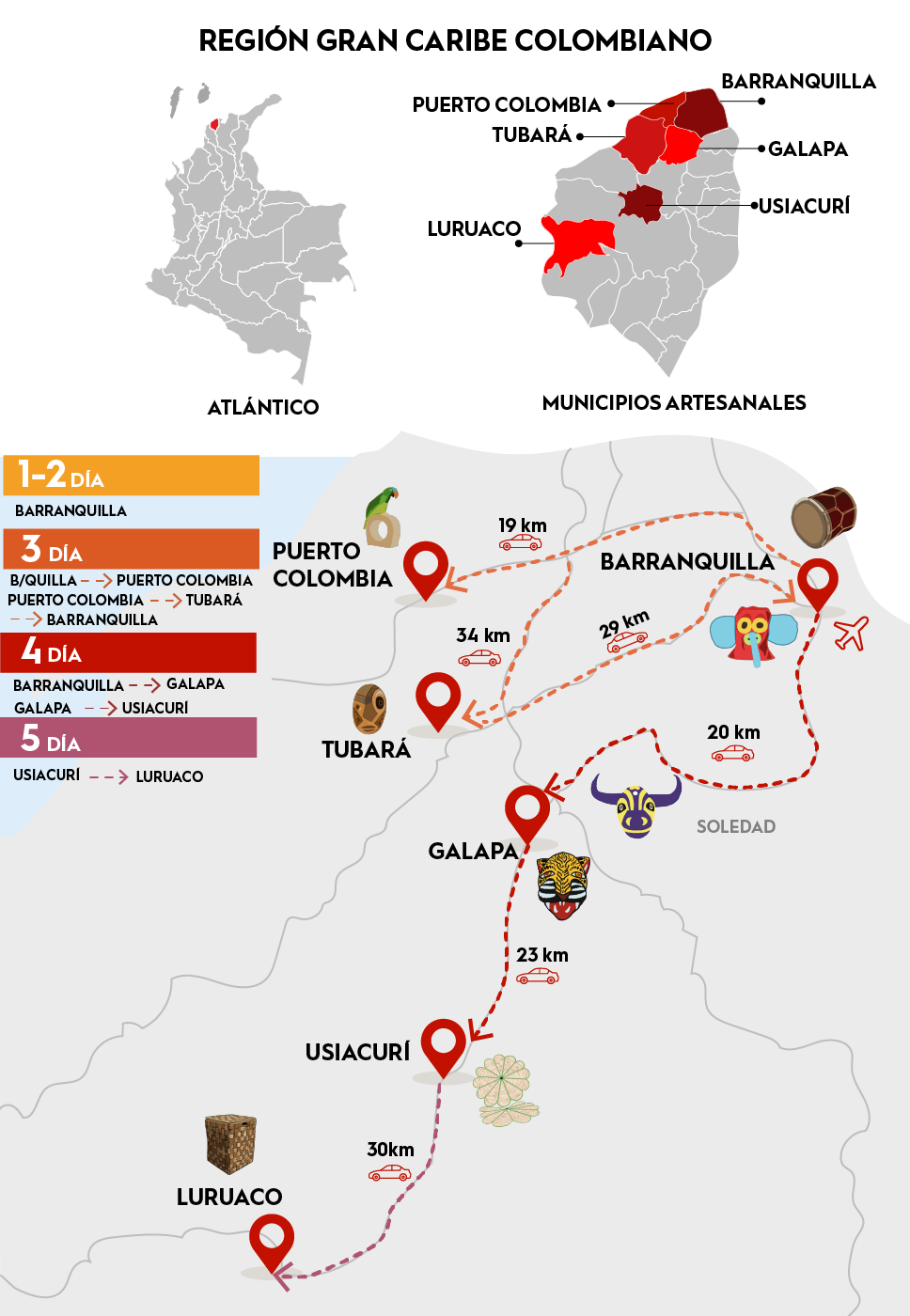
Artisans along the way
Artisans along the way
We recommended this tour
Schedule the visit in advance with the artisans.
Carry cash.
2 days
Car or Bus
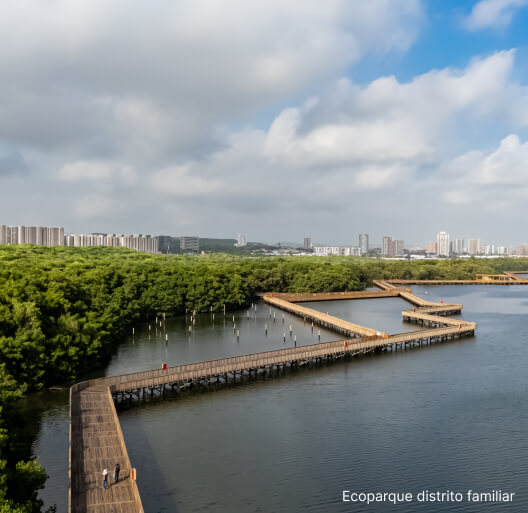
BARRANQUILLA
In Colombia’s Golden Gate, indulge in its rich culinary offerings and lively nightlife. We recommend spending two days exploring the city and its artisans. Stroll along the riverfront to witness the magnitude of this city and visit Plaza de la Paz with its imposing Cathedral. Don’t miss the renowned Barranquilla Museum of Modern Art and the Carnival Museum to prepare yourself for what’s to come. Make sure not to miss the Bar Museo La Cueva, where Gabriel García Márquez and his Barranquilla group used to gather. Indulge in iconic restaurants like El Cocuyo or El Palo de Mango, enjoy a delicious bollo limpio or traditional guandul sancocho or mote de queso at La tiendecita or Narcobollo.
On the second day, after getting used to the hot weather, artisans will receive you in their workshops: Jesus Orellano with his carved masks, Ivonn Gómez with her totumo pieces, Edgar Saez with his drums, and Hilda Romero with her fabric masks. Each will teach you about the crafts surrounding the Carnival and the valuable materials native to the region, such as totumo.
PUERTO COLOMBIA — TUBARÁ — BARRANQUILLA
Thirty minutes from downtown Barranquilla lies Puerto Colombia, a hub of Atlantic development, with its restored centenary pier, plaza, and the new Sazón Market. Besides connecting with the sea by visiting its boardwalk and Miramar Beaches, meet Ángel Paternina, a craftsman who works with driftwood brought by the sea waves to meticulously shape a curated selection of Colombian birds.
Thirty-two kilometers away is Tubará, land of the Mokaná, ancestors of our next artisan, Adolfo Coll. Inheriting Mokaná symbols depicted in the hieroglyphs of Piedra Pintada, an archaeological site we encourage you to visit, this artisan found in totumo the means to continue the tradition of creating masks and keeping alive the symbols of his ancestors.
Return to Barranquilla at night to rest.
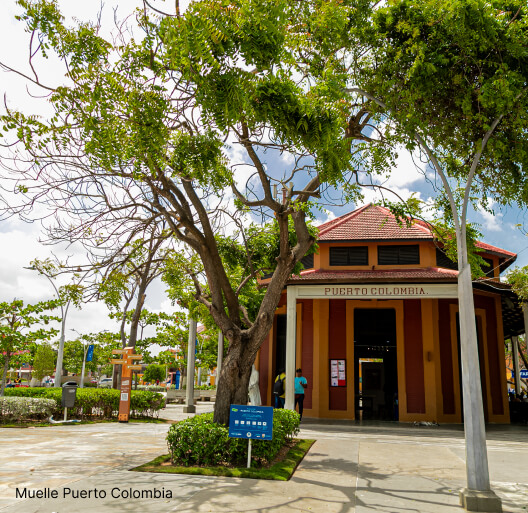
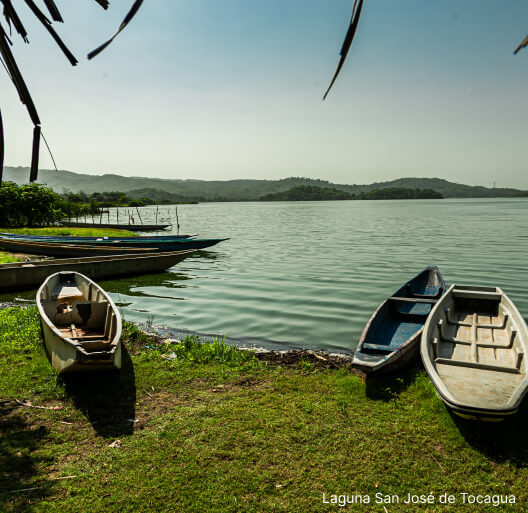
GALAPA — USIACURÍ
Twenty kilometers from Barranquilla, visiting Galapa requires spending quality time with master artisans Luis and Manuel Pertuz, who will explain the significance of each mask they carve. A morning with them allows you to learn about their art. Enjoy watching them carve the wood that will later embody a power animal or comparsa symbol and, if you want, learn a trick or two by trying it yourself. Then, visit Sonia González and know her garden’s flowers, beloved by the hummingbirds that inspire her vine pieces. You can also visit the Galapa Archaeological Museum to discover the pre-Hispanic history of these lands before heading to Usiacurí, just over half an hour away.
You’ll know you’ve reached Usiacurí, the manger of the Atlantic, when you see the monument to the weaving muse, and the flowers. After traversing an arid, dry roadside landscape, your eyes will suddenly be delighted with purple and fuchsia bougainvilleas. Take your time to appreciate Usiacurí’s unique horseshoe-shaped roads organization and visit iraca weaving artisans Yaneris Angulo, Sandra Muñoz, and Edilsa Baldovino. No rush here, just plans to make: visit the mineral wells, try a carimañola, visit the Santo Domingo Church, explore the Luriza Nature Reserve, or get lost in verses at the Julio Flórez Museum. Comfortable accommodations are available for an overnight stay.
LURUACO
Rise early for Luruaco, specifically San Juan de Tocagua, where locals’ lives intertwine with the Tocagua Lagoon, its fish, and plants. They’ve skillfully turned one of these plants into crafts: enea palm, traditionally used for mats, now woven into innovative pieces by artisans like Gloria Martínez and Yenis González.
End your journey on a high note by tasting the renowned arepas de huevo, celebrated at the end of June with a festival, and getting up close with Luruaco Lagoon. You can either navigate it, engage in water sports, visit its Bird Island, or simply contemplate its waters from a scenic spot.
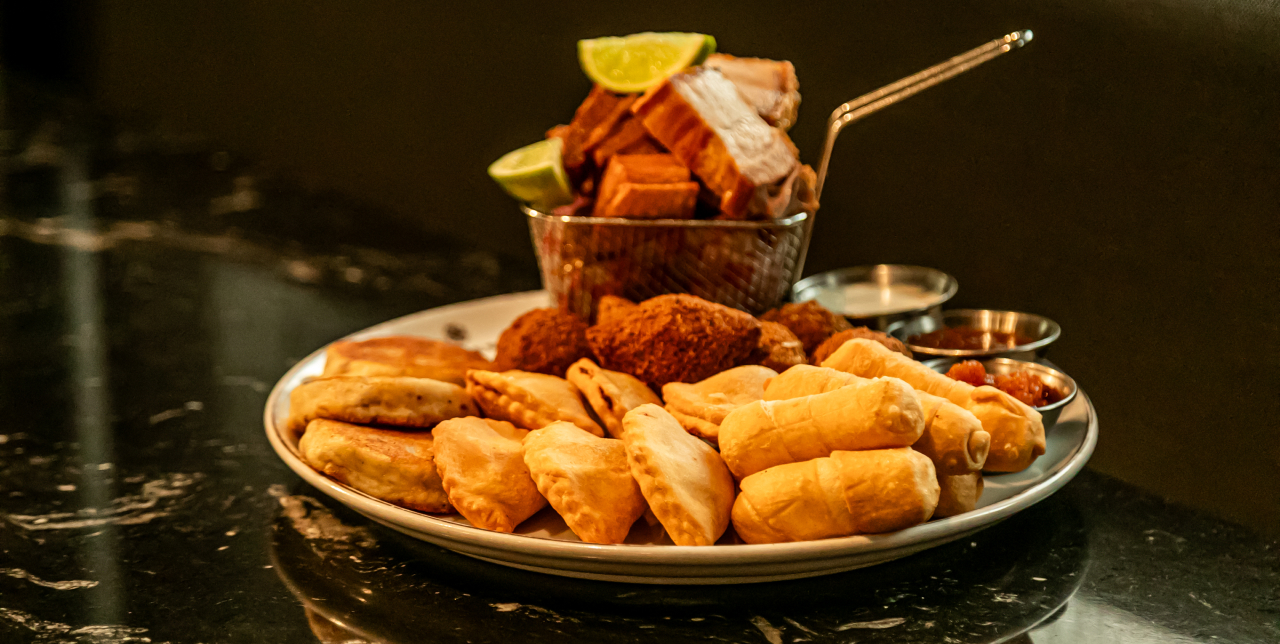
Traditional cuisine
and typical bites
Provoke yourself
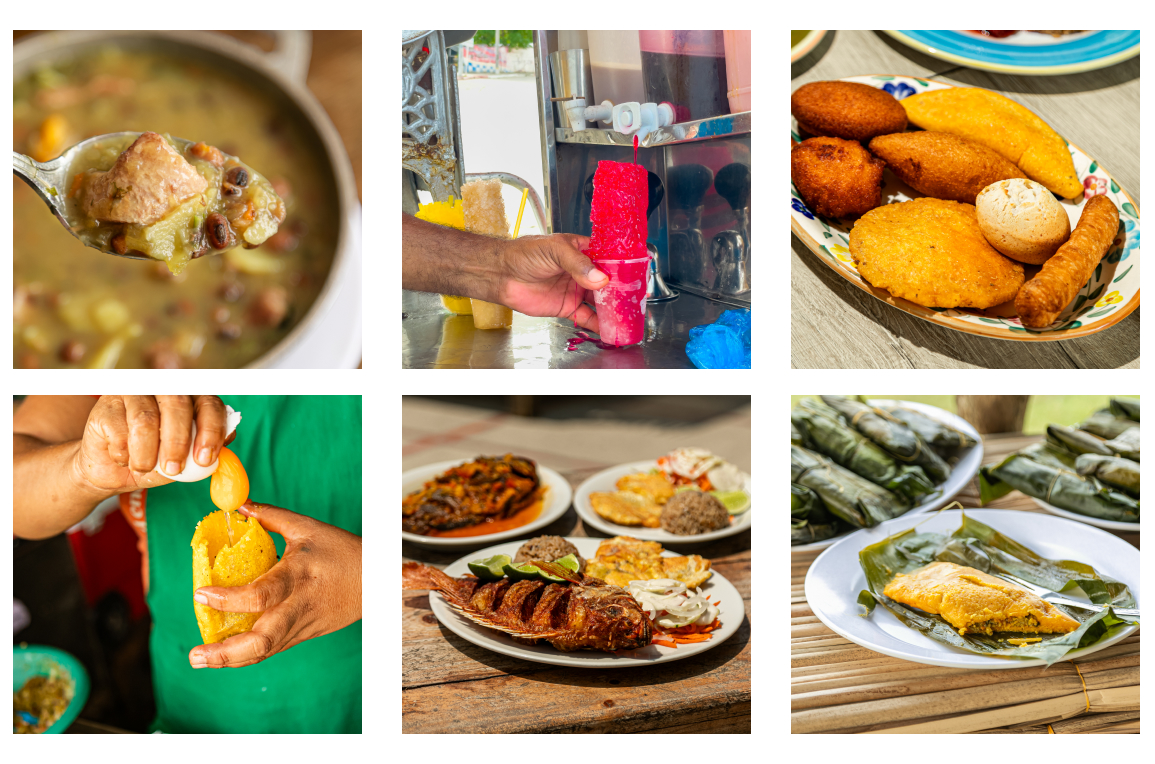
Don't leave without eating this 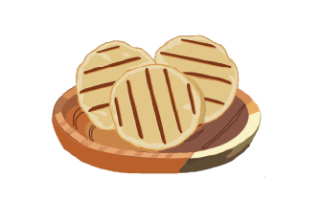
One of the essential dishes in Barranquilla is Sancocho de Guandú (Guandú stew with salted meat). Guandú is a legume similar to beans, widely consumed in the Atlantic region. It is typically cooked with ñame, yuca, ripe plantain, and a flavorful seasoning with cumin and sweet chili. This famous soup is served with salted meat, coconut rice, fried plantains, and bollo. Several local elderly women keep the tradition alive by preparing it in the most authentic way, including Mrs. Josefina Cassinai, whose courtyard is a great place to enjoy this and other delicious dishes.
To lunch we go 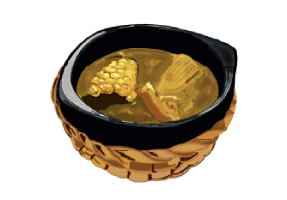
In the Atlántico region, lunch often consists of a soup or sancocho, and these dishes can vary significantly from one another. It’s common to serve them in totumas (rustic bowls made from dried totumo fruit), which are called totumazos.
Try the sopa de mondongo (tripe soup), or the delicious mote de queso (a soup made with yam and salty cheese, seasoned with onion and garlic—perfect for vegetarians!). Other popular stews include fish soups such as bocachico sancocho or sábalo sancocho with coconut milk, trifásico (salted meat and beef ribs), chicken sancocho (creole chicken stew), or salty pork and zaragoza beans sancocho. Each of these stews is cooked with vitualla (a mix of yam, yuca, green and ripe plantains), and finished with a garnish of cilantro, onion, chili, or a flavorful guiso. You can find these delicious stews at Totumazo Original or Totumazo y Verbena in Barranquilla.
One of the most popular dishes in Barranquilla, both among locals and tourists, is arroz de lisa. The lisa is a small river fish, and its meat is used to flavor rice cooked with cumin and vegetables, including sweet peppers. It’s typically served with bollo limpio and patacones. Narcobollo serves it with the best ingredients, making it exceptionally flavorful.
Another treat is Pastel de Arroz, which consists of rice seasoned with achiote and cumin, along with pork, chicken, and a vegetable stew, all wrapped in a bijao leaf. It is traditionally cooked over firewood, which gives it an exceptional flavor. When you visit artisan Gloria Martínez in San Juan de Tocagua (Luruaco), be sure to order this dish.
Puerto Colombia offers a variety of fish dishes, with some of the best options found at the Centro Gastronómico Internacional, El Viejo Muelle restaurant, and the Mercado Sazón Atlántico, where visitors can enjoy a range of specialties and food festivals. The most common dish here is fried fish, with options like mojarra, sierra, lebranche, and pargo rojo, served with boiled yuca and patacones. Another classic is salpicón de pescado, made with dried fish, a tasty stir-fry made with onion, tomato, sweet pepper, and achiote, and served with bollo and patacones, or with rice and black-eyed peas.
Flavors to discover and snack on 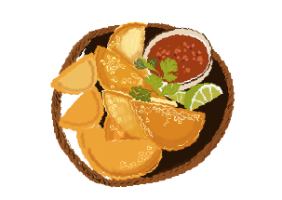
Fried snacks like carimañolas (yuca fritters filled with ground meat or cheese), sweet or anise arepas (sweet corn arepas flavored with cheese, sugar and anise), kibbes (a Lebanese dish made with bulgur and ground meat), arepa de huevo (a fried corn arepa filled with a whole egg, traditionally from the town of Luruaco), and dedito de Olaya (cheese fingers) are a must-try. Dulcerna offers a wonderful selection of vacuum-sealed chicharrones (crispy pork), cheese fingers, and picada curramba, a mixed platter with kibbes, cheese fingers, and empanadas.
Butifarras are also a local favorite, especially those from Soledad. These small sausages are famous throughout the Caribbean coast for the blend of spices used to season the meat. They are usually served on their own or with bollo limpio, which you can find at Narcobollo. Speaking of bollos, these are another essential dish in the region. They are sweet and savory cornmeal wraps made with ingredients like yuca, plantains, and millo, and some are flavored with coconut and anise (like the bollo angelito). They are wrapped in corn husks or plantain leaves.
The Arabic influence is evident in the Arab dish, which combines several preparations, allowing you to explore different flavors, such as almond rice with onion, roasted eggplant babaganoush, hummus made with chickpeas and tahini, vine leaves stuffed with meat and rice, and tabbouleh. You can find this at various Lebanese-influenced restaurants in Barranquilla, including Árabe Gourmet, M Restaurante Árabe, and Árabe Internacional.
To sweeten the palate and unmissable drinks 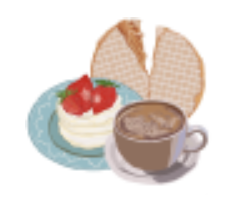
The winning drinks are the fresh fruit juices. Try corozo, zapote, or níspero juice with milk, or patillazo (crushed watermelon juice), guarapo (sugarcane juice with lime), agua o chicha de maíz (corn-based drink), and corn and pineapple peel chicha. These are some of the most popular beverages in the region, perfect for refreshing yourself on hot days. You can find them at the restaurants we mentioned earlier.
For a unique treat, try chocolate balls, made by toasting cariaco corn and grinding it with cacao almonds and spicy pepper. They can be dissolved in either cow’s milk or coconut milk, making for a delightful hot drink.
Among the traditional sweets, you’ll find mango, guandú, and zaragoza beans sweets, often eaten with casabe (crispy cassava bread). Alegrías de millo (balls made from puffed millet, sugarcane syrup, and coconut) are commonly found throughout Barranquilla and in towns along the route. Carisecas, sweet arepas made from ground corn, are grilled over plantain leaves and complemented with coconut milk, salty cheese, sugar, butter, and aniseed.
Finally, don’t miss visiting Heladería Americana and enjoying a traditional frozo malt, a type of milkshake that has delighted Barranquilleros and visitors for over 80 years.
In Barranquilla, other notable restaurants are revitalizing traditional cuisines by using native Caribbean ingredients combined with modern techniques. These include:
- Restaurante Palo de Mango
- Manuel Restaurante
- La Troja Restaurante Bar
- La Cueva, which also celebrates the life of writer Gabriel García Márquez and the Barranquilla Group.
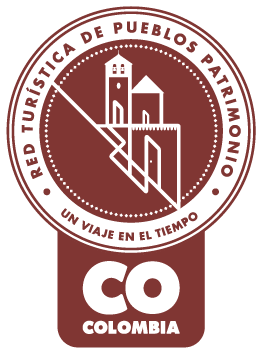
Pueblo Patrimonio
La Red Turística de Pueblos Patrimonio de Colombia es un programa especial del Ministerio de Comercio, Industria y Turismo, ejecutado por FONTUR, que trabaja con 17 municipios de Colombia que poseen declaratoria de Bien de Interés Cultural (BIC) a nivel nacional para su valoración y proyección mediante el turismo, generando así más oportunidades de desarrollo y sostenibilidad en las comunidades.
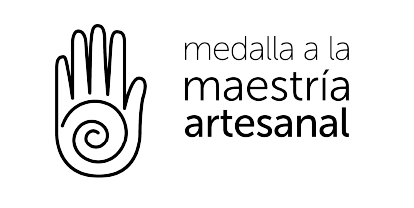
La Medalla a la Maestría Artesanal es un galardón que Artesanías de Colombia entrega anualmente, con el cual se hace un reconocimiento a aquellos artesanos, empresas y comunidades artesanales que, contando con una trayectoria destacada, sobresalen a nivel nacional por su excelencia en el oficio así como por preservar el quehacer artesanal.

Denominación de Origen
Es un signo distintivo que identifica productos reconocidos o famosos por tener una calidad o características específicas derivadas esencialmente del lugar de origen y la forma tradicional de extracción, elaboración y producción por parte de sus habitantes. La protección conferida sobre una Denominación de Origen implica que ninguna persona puede identificar con la denominación protegida productos iguales o similares a los amparados, cuando no provengan del verdadero lugar y no cumplan con las características o calidades que le han dado la reputación al producto reconocido. Las Denominaciones de Origen para productos artesanales colombianos que han sido protegidas por la Superintendencia de Industria y Comercio en nuestro país son actualmente 12.
No puede copiar contenido de esta página

